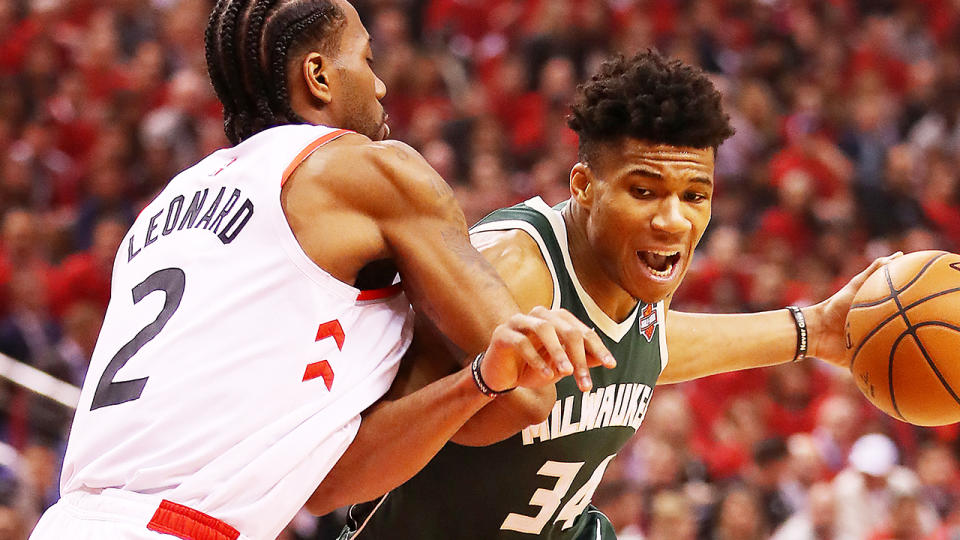Yahoo Fantasy Basketball: The difference between points and category leagues
Josh Lloyd is a Fantasy Basketball expert for Yahoo Sport based in Melbourne, Australia. His weekly articles will give you the edge on your opponents. Get in touch with questions for Josh on Twitter where he's always active.
For all the latest tips and to ask for advice from other players and our experts, join our Fantasy Basketball Insiders group on Facebook.
If you're creating a fantasy basketball league for the first time, you will notice there are two very different scoring systems to choose from. Standard point scoring is the default in Yahoo Fantasy and perfect for beginners. Category point scoring is very different and better suited to more experienced users.
After reading my ultimate beginner’s guide to fantasy hoops, you should understand how a standard points league works. If you haven’t (and you really, really should if you’re new to this), here’s a quick refresher...
How Standard Point Scoring Works for Fantasy Basketball
Basically, players accumulate points based on actions they perform on the basketball court. In default Yahoo points leagues, you score based on the following:
1 point for every real-life point scored
1.2 points for every rebound grabbed
1.5 points for every assist registered
3 points for every steal swiped
3 points for every shot blocked
-1 point for every turnover committed.
So, a player who ends the night with 15 points, six rebounds, three assists, one steal, one block, and two turnovers would end up with 30.7 fantasy points. Simple enough?
How Category Scoring Works for Fantasy Basketball
In a category league, acquiring players before the season, executing trades, changing your lineup, using the waiver wire is the same - but how you score points is where there’s a big difference.
[Join or create a 2019 Yahoo Fantasy Basketball league for free today]
In normal category scoring systems, there are nine categories that are used:
Points
Three-pointers
Rebounds
Assists
Steals
Blocks
Field Goal Percentage
Free Throw Percentage
Turnovers
Over the course of the week, you face off against your opponent and try to win more categories than them. For example, you will beat the person you’re up against if your team scores more points, three-pointers, rebounds, assists and steals - because you have won five of the categories and your opponent has only won four (hypothetically, blocks, field goal percentage, free throw percentage and turnovers).

Let’s look at a more detailed example:
For the week, Team A totals the following stats:
145 points, 9 three-pointers, 75 rebounds, 22 assists, 5 steals, 6 blocks, 9 turnovers, 55.6% field goal percentage, 71.4% free throw percentage.
Team B totalled the following numbers.
120 points, 14 threes, 68 rebounds, 25 assists, 6 steals, 7 blocks, 8 turnovers, 53.5% field goal percentage, 67.8% free throw percentage.
Comparing those totals, we see that Team A had more points and rebounds, and a higher field goal percentage and free throw percentage. Team B led in threes, assists, steals, and blocks. Because turnovers are considered a negative, the team with the fewest amount wins that category, so Team B had fewer turnovers leading them to a win in that category. Therefore, Team B walks away with a 5-4 win.
There Are TWO Different Category Scoring Formats
And just to make things a little more complicated, there are two different formats to choose from when using category scoring - Each Category Head to Head and Most Categories Head to Head.
In an Each Category Head to Head league, each category is counted as a mini-contest. So, if you beat your opponent in points, rebounds, assists, steals, field goal percentage, and free throw percentage, you get six wins. However, your opponent gets three wins because their team racked up more threes, blocks, and fewer turnovers. Therefore, this would be a 6-3 win.
In Most Categories Head to Head, you simply need to win a minimum of five of the nine categories each week. If you achieve this, it’s a 1-0 victory.
How Category Leagues Differ From Points Leagues
One way to look at a category league versus a points league is that each matchup in a category league contains nine mini matchups that you are trying to compete in, upping the complexity and difficulty over a points league, where you are competing in one category - fantasy points. This added complexity introduces a whole bunch of new strategies in drafting, team building, trading, and team management, but that goes beyond the scope of this article.
If you have any more questions about the differences between points league and category leagues, feel free to hit me up on Twitter.
More from Yahoo Sport Australia
'MONSTER YEAR': NBA legend Paul Pierce's bold prediction for Ben Simmons
GET STARTED: The ultimate beginner's guide to Fantasy Basketball
ROOKIE WATCH: Top 8 Fantasy rookies and where you should pick them
MASSIVE MOMENT: The bigger picture of the Boomers' win over Team USA
